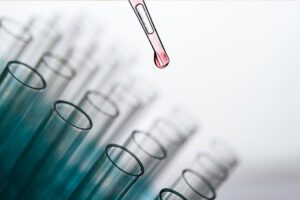The world of electronics is constantly evolving, demanding materials that can keep pace with the demands of innovation. Polyvinylidene difluoride (PVDF) has emerged as a versatile and indispensable material in the electronics industry. Its unique properties make it an ideal choice for a wide range of applications, from capacitors to sensors and beyond. In this comprehensive guide, we will delve deep into the intricate applications of PVDF in electronics, unraveling the complexity and significance of this remarkable material.
1. Introduction to PVDF

Polyvinylidene difluoride (PVDF) is a high-performance fluoropolymer known for its exceptional chemical stability, mechanical strength, and electrical properties. With a chemical formula of (CH2CF2)n, PVDF’s unique molecular structure has made it a standout material in various industries, especially electronics.
2. The Remarkable Properties of PVDF
Before diving into its applications in electronics, let’s examine the key properties that make PVDF such an attractive choice:
2.1. Electrical Properties
PVDF boasts excellent electrical properties, including a high dielectric constant and low dissipation factor. These characteristics are crucial for electronic applications where precise control of electrical signals is essential.
2.2. Piezoelectricity
One of the most remarkable features of PVDF is its piezoelectricity. When subjected to mechanical stress, PVDF generates an electrical charge. This property is harnessed in various sensors and transducers.
2.3. Chemical Resistance
PVDF exhibits outstanding resistance to a wide range of chemicals, making it suitable for use in harsh environments common in electronics manufacturing.
2.4. 熱安定性
PVDF can withstand moderate temperatures, which is essential for components that may experience temperature variations during operation.
3. PVDF in Capacitors
3.1. Dielectric Material
PVDF is used as a dielectric material in capacitors. Its high dielectric constant allows for increased energy storage capacity, making it suitable for applications like energy storage and power conditioning.
3.2. Film Capacitors
PVDF films are used to create film capacitors that offer exceptional stability and reliability in various electronic circuits.
4. PVDF in Piezoelectric Sensors
4.1. Sensor Applications
PVDF’s piezoelectric properties make it an ideal choice for sensors. It is employed in pressure sensors, accelerometers, and vibration sensors, among others.
4.2. Ultrasound Transducers
In medical imaging and industrial testing, PVDF-based ultrasound transducers provide high-resolution imaging and precise measurements.
5. PVDF in Printed Circuit Boards (PCBs)
5.1. PCB Substrates
PVDF is used as a substrate material in PCBs. Its excellent electrical properties ensure reliable signal transmission and reduced signal loss.
5.2. High-Frequency PCBs
For high-frequency applications like RF (Radio Frequency) circuits, PVDF-based PCBs are preferred due to their low signal attenuation.
6. PVDF in MEMS (Micro-Electro-Mechanical Systems)
6.1. Micro-Actuators
PVDF’s piezoelectric characteristics make it an ideal material for micro-actuators in MEMS devices, enabling precise movement and control at a small scale.
6.2. Sensors and Gyroscopes
PVDF is used in MEMS sensors and gyroscopes, contributing to advancements in consumer electronics and navigation systems.
7. PVDF in Flexible Electronics
7.1. Flexible Substrates
The flexibility of PVDF films makes them suitable for flexible electronic devices, such as flexible displays and wearable electronics.
7.2. Bendable Sensors
PVDF-based sensors can be integrated into flexible electronics, allowing for innovative applications like wearable health monitors.
8. Frequently Asked Questions (FAQ)
Q1: How does PVDF’s piezoelectricity work?
PVDF’s piezoelectric effect occurs when the polymer’s internal dipoles align in response to mechanical stress, generating an electrical charge.
Q2: Are PVDF-based capacitors more efficient?
Yes, PVDF-based capacitors are known for their high energy storage capacity and efficiency, making them valuable in various energy-related applications.
Q3: Can PVDF withstand high temperatures in electronics?
While PVDF has good thermal stability, its temperature tolerance is moderate. For extreme high-temperature applications, other materials may be preferred.
Q4: Is PVDF environmentally friendly for electronics?
PVDF is generally considered safe for electronics applications and is recyclable, contributing to reduced electronic waste.
Q5: What future innovations can we expect with PVDF in electronics?
As research continues, PVDF is expected to play a vital role in the development of advanced electronic devices, including flexible and wearable electronics, as well as in the miniaturization of electronic components.
In conclusion, the applications of PVDF in electronics are both diverse and intricate. Its remarkable properties, including its electrical characteristics, piezoelectricity, chemical resistance, and thermal stability, have positioned it as a cornerstone material in modern electronics manufacturing. As technology continues to advance, PVDF’s role in shaping the future of electronic devices is set to become even more prominent, ushering in new innovations and possibilities in the world of electronics.



